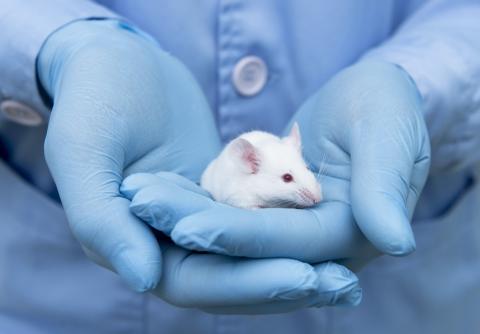- Overview
-
Species
MouseStrain common name
Atp13a5 tdTFull nomenclature
Atp13a5-2A-CreERT2-IRES-tdTomatoGenetic background
C57BL/6JDescription of model, including genes and any mutation(s):
Possibility to acutely ablate brain pericyte when crossed with iDTR mice - Donor DNA templates encoding self-cleaving 2A peptide, CreERT2, internal ribosome entry site, tdTomato, and flp recombinase (2A-CreERT2-Frt-IRES-tdTomato-Frt) were synthesized. These sequences were flanked by 1184bp sequences and 1237bp sequences homologous to the last exon and 3’ UTR region of Atp13a5 gene. In addition, the IRES-tdTomato sequence is further flanked by two flp recombinase target (frt) sites. Next, these donor vector containing the 2A-CreERT2-Frt-IRES-tdTomato-Frt cassette, and gRNA (TTTTGGACTAGACTGTAACCAGG) were co-injected into fertilized C57BL/6N mouse eggs to generate targeted conditional knock-in offspring.
Original publication of model
DOI: 10.1101/2021.07.09.451694Breeding scheme
Homo x HomoType of model
Tool (i.e. cellular manipulation, labelling, tracking) - Availability
-
Principal investigator
Axel MontagneInstitution
UK DRI at EdinburghNamed contact
Axel MontagneContact email
axel.montagne@ed.ac.ukSource of model
In-houseSupplier code
-MTA Holder and Issuing Organisation:
Dr. Zhen Zhao (USC) - Study details
-
Sex
BothAge of model
2 weeks, 1-1.5 months, 3-4 months, 9-12 monthsDuration of Study
Up to 1 yearDiet
Standard chowCage enrichment and housing
Group housingTypes of outcomes measured
Cell biology (i.e. protein-protein interactions)Neurobehaviour (i.e. sensory, motor, cognition)Omics (i.e transcriptomics, proteomics, metabolomics)Structural measure (i.e. IHC, EM, structural MRI)Vascular function (i.e. BBB integrity, CBF)Details of Outcomes Measured
Structure (IHC, EM, structural MRI), behaviour (nesting, burrowing, Y-maze, NOL, NOR, fear conditioning), Vascular function (MRI-derived BBB, CBF, endothelial function, and microbleeds), Cell biology (endothelium-pericyte-microglia tripartite interaction), Omics (scRNAseq endothelial cells and pericytes vs the rest)
Strengths of Model
- Brain pericyte specificity, genetic manipulation of brain pericytes, tdTomato tag for pericyte tracing
Limitations of Model
- Not all pericyte subtypes do express Atp13a5
Reference to published procedure
DOI: 10.1038/s41593-019-0434-zDetails of any modications made to published procedure
Different mouse line but same objective and outcome
Image

Brain pericyte lineage tracing
Tool (i.e. cellular manipulation, labelling, tracking)